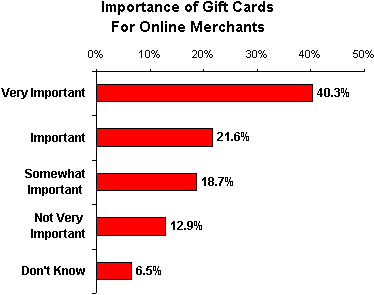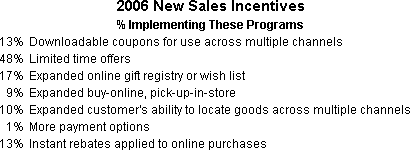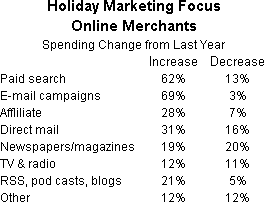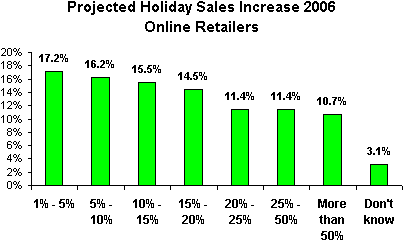IDEX Online Research: Holiday Online Sales Competition to Be Stiff
November 23, 06
Huge online sales gains, especially during the upcoming holiday selling season, could be a thing of the past, according to retailers surveyed by Internet Retail magazine. The median sales increase (half above this level, half below this level) that online merchants expect during this year’s holiday selling season is about 15 percent. Historically, sales gains in the 25-30 percent range were the norm.
Retailers say that online retailing is more crowded than even the largest shopping malls, with competitors coming and going every day. Further, with online search engines seeking the lowest price for comparable goods, shoppers don’t have to spend an enormous amount of time searching for the best deal – they let their computer find it for them.
For jewelers, the holiday selling season is by far the most important two-month period of the year. Jewelers generate about one-third of their annual sales and up to 100 percent of their annual profits during November and December. Many store-based jewelers have just begun to embrace online retailing. Unfortunately, they are late to the party. The competition – mostly online jewelers with no bricks-and-mortar presence – is already well-established and have captured significant market share.
For those store-based jewelers who expect to sell goods online during this holiday selling season, here are some important metrics related to the competition.
I. Sales Gains – About half of the online merchants surveyed say that they have planned their budgets on a sales gain of 15 percent or less. Only 20 percent of all online merchants think their sales will increase by 25 percent or more over last year’s levels, as the graph below illustrates.
|
|
II. Gift Cards – About half of all online merchants will offer gift cards (52 percent will; 48 percent will not). Of those who offer online gift cards, here’s how important they rank this sales generator.
 Source: Internet Retailer |
III. New Incentives – Nearly 2/3 of all online merchants are offering new incentives or programs to drive holiday shoppers to their virtual stores. Here’s a sample of some of their new programs.
 Source: Internet Retailer |
IV. Shipping – Roughly 2/3 (62 percent) of all online merchants will offer free shipping this year. Only 10 percent of those who charge for shipping said they will increase their shipping and handling charges.
V. Marketing Focus – “Paid search” will be the focus of online retailers’ marketing efforts this year. The following table summarizes the media where online retailers will increase and decrease their spending during this year’s holiday selling season. Which media is losing out the most? As expected, traditional print media – newspapers and magazines – are losing market share to electronic media.
 Source: Internet Retailer |
VI. New Website Features – Some of the new website features that online merchants have implemented include the following.
· Customer product reviews
· Faster site search
· Expedited check-out
· E-mail to a friend
· Electronic catalogs
· Zoom technology and other rich media applications
· Bigger product images
· In-stock status
VII. New Technologies – More than half of the online retailers (56 percent) say they have re-designed their website for the upcoming holiday selling season. Jewelers should take note: if you are still using last year’s website, you are in the minority. Here is a list of some of the new technologies which online retailers have implemented, along with the percentage of respondents who have implemented the technology.
· Re-designed website - 56 percent
· Tied customer-facing ordering system to fulfillment system - 13 percent
· Tied ordering system to inventory system – 19 percent
· Added servers to handle increased load – 20 percent
· Added live chat – 7 percent
· Added mobile commerce 3 percent
For jewelers, online commerce is a channel of distribution that is here for the long term. Jewelers who fail to take advantage of this new opportunity to reach consumers run the risk of losing significant market share, especially among younger consumers with a higher lifetime value.
